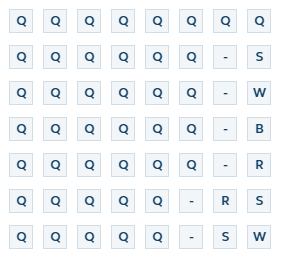Stock Code Naming Rules
Key Points of Stock Code Naming Rules in the US Stock Market
Composition of Stock Codes
Stock codes typically consist of 1 to 4 letters, but there are exceptions.
Stocks listed on the NASDAQ typically have 4-letter codes, while those listed on the New York Stock Exchange usually have 3 letters or fewer.
Stock codes can contain letters, numbers, and sometimes special characters like hyphens.
Companies may choose a stock code that represents their name or brand, such as Apple Inc.'s stock code, AAPL.
Stock codes can also be used to differentiate between different classes of shares of the same company, for example, Google's Class A and Class C shares are represented by GOOGL and GOOG, respectively.
Assignment of Stock Codes
Stock codes are assigned by stock exchanges (such as the New York Stock Exchange or NASDAQ) when companies are listed.
Companies can usually request their preferred stock code, but the exchange has the final approval authority.
Exchanges try to avoid assigning codes that are too similar to existing ones to prevent confusion.
If a code is already in use, the exchange may add additional letters or numbers to distinguish between them.
Exchanges typically do not reject a company's preferred stock code unless it conflicts with existing codes.
Other Considerations
Stock codes can sometimes reflect a company's brand or identity, not just an abbreviation of its name.
Companies may change their stock codes when undergoing mergers, rebranding, or other major changes.
Stock codes are not limited to stocks - they are also used for other financial instruments such as ETFs and mutual funds.
Hong Kong Stock Exchange Stock Short Name Naming Rules (verbatim)
Please refer to the official presentation of the Hong Kong Stock Exchange for detailed information. Click here to view.
Equity Securities

Q - Up to eight characters, representing the name of the listed company.
S - Second listing symbol.
W - Symbol for companies with different voting rights structures.
B - Symbol for biotechnology companies.
R - Symbol for Renminbi trading.
RS - Securities defined as restricted (RS) securities by the U.S. federal securities laws.
Please click here for more information on RS.
Note: The stock short name naming rules for Renminbi trading products mentioned above took effect on May 23, 2012. The stock short names for related product types listed before May 23, 2012, remain unchanged.
During the parallel trading period, if any, symbols will be used to identify the original stock pages and temporary stock pages.
Hong Kong Depositary Receipts
Q - Up to five characters, representing the issuer and/or relevant underlying stock.
DR - Depositary Receipt symbol.
S - Second listing symbol.
Note:
Hong Kong Depositary Receipts defined as restricted securities by the U.S. federal securities laws currently do not have Chinese stock short names.
Equity Warrants
Q - Up to five characters, representing the name of the relevant underlying stock.
Year - Expiry year.
Month - Expiry month.
Unit Trusts

Q - Up to five characters, representing the name of the relevant underlying stock.
SS - Unit Trust symbol.
Securities Code Allocation Plan

Please click here for more information on RS.
The above are the key points of the stock short name naming rules. For detailed information, please refer to the relevant presentation of the Hong Kong Stock Exchange.